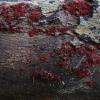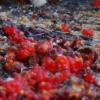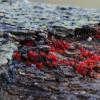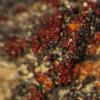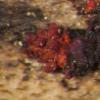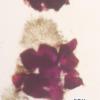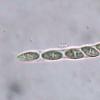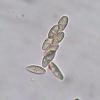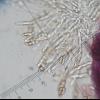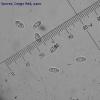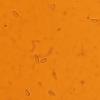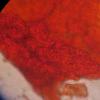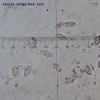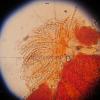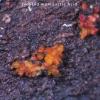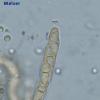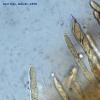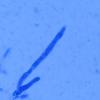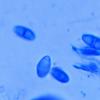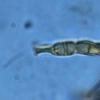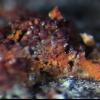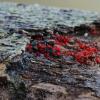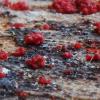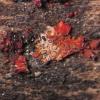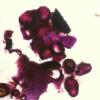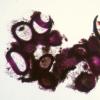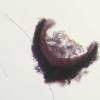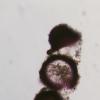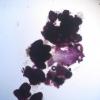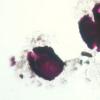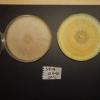
15-12-2025 15:54
 Johan Boonefaes
Johan Boonefaes
Unknown anamorph found on the ground in coastal sa

15-12-2025 15:48
 Danny Newman
Danny Newman
Melanospora cf. lagenaria on old, rotting, fallen

15-12-2025 07:05
 Danny Newman
Danny Newman
Pseudosclerococcum golindoi (det: Zotto)near Cosb

15-12-2025 11:49
 Danny Newman
Danny Newman
ITS sequences from the following two collections B

15-12-2025 07:09
 Danny Newman
Danny Newman
indet. Rutstroemiaceae sp. on unk. fallen leavesMc

15-12-2025 12:34
 Danny Newman
Danny Newman
indet. Rhytismataceae on oak leafnear Purchase Roa

09-12-2025 12:06
 Andgelo Mombert
Andgelo Mombert
Bonjour,Je recherche l'article concernant Hypobryo

12-12-2025 18:39
Mirek GrycHello everyone.Macrofeatures similar to Mollisia b
 Hi, I have found this coral-like aggregates of an ascomycete which i have tentatively identified as Nectria cinnabarina agg.. From Hirooka monograph, I would plac the specimen better in N. cinnabarina s.str rather than N. dematiosa. The population was under bark of a choped branch of Prunus sp. likely P. dulcis but could be a stone fruit too.
Hi, I have found this coral-like aggregates of an ascomycete which i have tentatively identified as Nectria cinnabarina agg.. From Hirooka monograph, I would plac the specimen better in N. cinnabarina s.str rather than N. dematiosa. The population was under bark of a choped branch of Prunus sp. likely P. dulcis but could be a stone fruit too.However, on searching the forun for Nectria, there ar so many other mediterranean species sthat I came into doubt about my ID. Here is the data
Ascocarp morphology: Clustered ostiolate perithecia
Acocarp colour: Bright red, then blackening when old; purple-blue in KOH, orange-yellow in lactic acid
Ascocarp diameter: 0.16 – 0.32 mm (mean: 0.23 mm)
Ascocarp texture: Rough, Granulated or minutely tuberculate
Ascocarp shape: Spherical then pyriform, opening at the apex by a tiny narrow ostiole sometimes widening to a cupulate shape
Ascocarps sit on a common perithecial stroma, up to 1mm high
Paraphyses not numerous, filamentous, very thin and hyaline, inconspicuous and do not take the stain very well
Ascospore release through an apical orifice without an operculum
Asci: cylindrical to subclavate, slender, slightly bent ot curved, tapering gently towards the base.
No. of Spores 8
Tunic (Wall) Uni-tunicate, hyaline and do not stain well
Ascum length (range) 70 - 100 µm
Ascum length (mean) 84 µm
Ascum width (range) 6.8 - 7.5 µm
Ascum width (mean) 7.1 µm
Ascum L:W ratio 11.8
Iodine reaction (J +/J -) J-ve (but I'm not sure there is a blackish shadoe at the tip with IKI)
Orifice or ascum rim Rim slightly revolute, oriffice narrow, canal-like, surrounded by a thich asus wall.
Spore length: (range) 11.46 - 16 µm
Spore length: (mean) 13.7 µm
Spore width: (range) 4.76 - 7.44 µm
Spore width: (mean) 6.3 µm
Spore Q factor (range): 1.84 - 2.85 µm
Spore Q factor (mean): 2.2
Spore shape: Fusiform to navicular with a constriction at the central septum
Spore septa 1
Spore surface: Smooth or finely rugose when observed at high resolution with LACB
Oil bodies: Two, one at each side of the septum, often seen as a small amorphous body of many aggregates coalescing together until finally forming a distinct globular oil body.
Remarks Spore quite variable in size.

your fungus is not the genus Nectria but it could be an old specimen of Cosmospora s. l.
Regards,
Christian

Thanks

Your fungus as pyriform ascomata and seems fungicolous on your images.
Christian

Stroma inconspicous or absent [Not sure]. Perithecia scattered to gregarious[YES], pyriform with an acute or apical papilla[YES], collapsing cupulate or pinched when dry[YES], orange red or bright red [YES], turning dark red in KOH+[YES, but purple-violet], smooth walled [Maybe], usually 150–450 ?m high [YES]. Asci cylindrical to narrowly clavate[YES], with an apical ring [I think I've seen this sometimes, not sure], 8 uniseriate or partly biseriate ascospores [YES]. Ascospores initially hyaline but becoming yellow brown to reddish brown, 1-septate [YES], becoming tuberculate when mature [I think so].
Habitat: On fruiting bodies and stromata of other fungi, e.g.Fomitopsis, Hypoxylon, Inonotus, Stereum, often isolated from soil. [I'm not convinced]
I am not convinced that the perithecia are fungicolous and the black stroma-like bedding seems to be part of the nectriaceae species. Young individual perithecia seems to be growing directly from the stem, so I think we have a lignicolous species rather fungicolous. How can we confirm this???
Also what literature do you suggest on this topic?




Hope this give some more clues, and I would really appreciate your expert help.

Cheers,
Christian


Chirstian

I managed to grow colonies from the teleomorph producing white colonies
Follow here:
http://www.ascofrance.com/forum?page=1&id=49058

I think your fungus could be "Cosmospora' flavoviridis, which is not Cosmospora s. str.
Regards,
Christian

C. meliospicola: Distribution central Africa and North Africa - not european (but Malta is close to Africa!); spore size - OK; Spores smooth to slighlly spinulose - OK; On wood possibly fungicolous (OK-ish); anamorph Acremonium-like - I don't know
C. stilbosporae: Distribution Europe - OK; growing on Valsa sorbi - NO; ascospores (13- )13.5- 16.5{-18.5) x (5.5- )6-7(- 7.5) - a bit too large; anamorph Fusarium - I don't know.
C. flavoviridis (Sphaerostilbe flavoviridis): Anamorph colony greenish - mine where white, but yellowish on SDA (see image); Distribution North temperate (North Europe and UK) - maybe too north for Malta ? ; On stromatic ascomycetes on wood - YES.
(C. dingleyae: offers a good match but from New Zealand!)
Christian, may I ask why you would exclude C. meliospicola and 2) is my anamorph an Acromonium or Fusarium or Acromenoid-like Fusarium hmm....
Further info: http://www.mycodb.fr/fiche.php?genre=Cosmospora&espece=flavoviridis
Your anamorph doesn't correspond to C.meliopsicola (which is said to have unicellular, ellipsoid conidia).
You conidia are (at least?) 3-septate and are fusarium-like. The anamorph of C.flavoviride is reported to be F.melanochlorum which, according to Samuels, Rossman et al, is "yellow, becoming olivaceus with yellow-green pigment spreading on to the agar".
Hope that helps,
Nick

Many thanks for you help. If you need any of my photos high-res for any use, just let me know. As I see this is the first time this Cosmospora is reported on AscoFrance.
Great!
Related info:
https://www.dgfm-ev.de/publikationen/artikelsuche/ansaetze-zur-erfassung-der-taxonomischen-struktur-der-ascomycetengattung-cosmospora-und-ihrer-nebenfruchtformen/download
